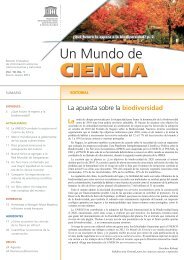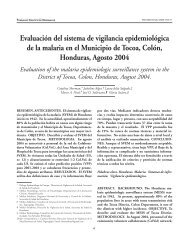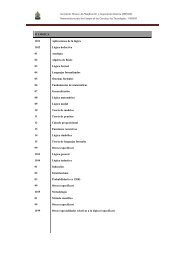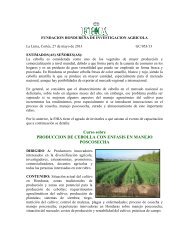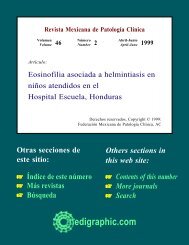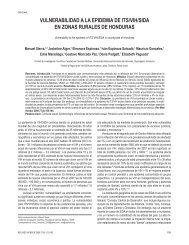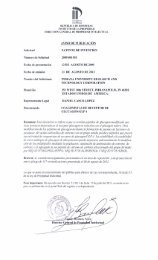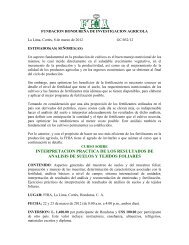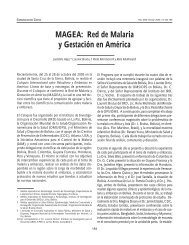World of Work Report 2013 - International Labour Organization
World of Work Report 2013 - International Labour Organization
World of Work Report 2013 - International Labour Organization
Create successful ePaper yourself
Turn your PDF publications into a flip-book with our unique Google optimized e-Paper software.
In emerging and developing countries, the share <strong>of</strong> informal employment<br />
remains high, standing at more than 40 per cent in two-thirds <strong>of</strong> such countries<br />
for which data are available.16<br />
In an effort to derive a single indicator for job quality performance, a principal<br />
component analysis (PCA)17 was undertaken. In advanced economies the<br />
change in the percentage <strong>of</strong> temporary employees,18 the change in social benefits<br />
expenditure as share <strong>of</strong> total public expenditure and the growth in the average<br />
hourly wages between 2007 and 2011 were used. In the case <strong>of</strong> emerging and<br />
developing economies, the growth in average real wages (between 2007 and 2011)<br />
and the change in the incidence <strong>of</strong> informal employment between the pre-crisis<br />
and the crisis period were used.<br />
In advanced economies, this job quality indicator is positively correlated to<br />
average hourly earnings and social expenditure as a share <strong>of</strong> public benefits and<br />
negatively correlated to the percentage <strong>of</strong> temporary employees.19 In the case <strong>of</strong><br />
emerging and developing economies, the job quality indicator is positively correlated<br />
to the growth in real wages and negatively correlated to the change in the incidence<br />
<strong>of</strong> informal employment.20 Therefore, a country with a higher score for this<br />
indicator can be identified with a good performance in terms <strong>of</strong> job quality. Likewise,<br />
labour market performance in both advanced and emerging and developing<br />
economies is defi ned by combining three labour market indicators, namely the<br />
average annual growth in employment between 2007 and 2011 and the changes in<br />
unemployment and labour force participation rates during the same period. This<br />
composite indicator for labour market performance21 is positively correlated to the<br />
change in employment and labour market participation rate and negatively correlated<br />
to the change in unemployment rate. Thus, a higher score <strong>of</strong> this indicator<br />
means a good labour market performance.<br />
Figure 1.5 illustrates that the change in labour market performance is negatively<br />
related to the change in job quality performance between 2007 and 2011<br />
12<br />
16. ILO (2012).<br />
17. Principal component analysis (PCA) is a mathematical procedure that transforms a number <strong>of</strong><br />
correlated variables into a smaller number <strong>of</strong> uncorrelated variables called principal components,<br />
where each component is a linear weighted combination <strong>of</strong> the original variables.<br />
18. One dimension <strong>of</strong> job quality considers the contractual status and stability <strong>of</strong> employment,<br />
i.e. standard and non-standard jobs in advanced economies or formal and informal employment in<br />
developing economies. Temporary employment is a type <strong>of</strong> non-standard employment. Nevertheless,<br />
a high incidence <strong>of</strong> temporary employment per se is not problematic if accepted voluntarily. A<br />
second dimension <strong>of</strong> job quality examines the willingness <strong>of</strong> temporary workers to remain in their<br />
job, i.e. involuntary temporary employment, defi ned as those workers who are engaged in temporary<br />
employment because they cannot fi nd permanent jobs. However, only the percentage <strong>of</strong> temporary<br />
employees has been taken into account in the analysis because data on involuntary temporary<br />
employment are only available for European countries.<br />
19. The weights used to derive the composite indicator are the factor loadings on the fi rst component<br />
<strong>of</strong> the PCA. The fi rst component explains 55 per cent <strong>of</strong> the common variance across the indicators.<br />
Component loadings for the three variables (average hourly wages, public expenditure in social benefits<br />
and percentage <strong>of</strong> temporary employees) in component 1 are 0.65, 0.48 and -0.60, respectively.<br />
20. The weights used to derive the composite indicator are the factor loadings on the fi rst component<br />
<strong>of</strong> the PCA. The fi rst component explains 75 per cent <strong>of</strong> the common variance across the indicators.<br />
Component loadings for the two variables (average real wages and informal employment as<br />
percentage <strong>of</strong> total non-agricultural employment) in component 1 are 0.71 and -0.70, respectively.<br />
21. The weights used to derive this labour market performance indicator are the factor loadings<br />
on the fi rst component <strong>of</strong> the PCA. The fi rst component explains 70 per cent and 60 per cent <strong>of</strong><br />
the common variance across the indicators in the case <strong>of</strong> advanced and emerging and developing<br />
economies, respectively. Component loadings for the three variables (employment, unemployment<br />
rate and labour participation rate) in component 1 are 0.67, -0.60 and 0.43, respectively, in the case<br />
<strong>of</strong> advanced economies; and 0.68, -0.36 and 0.64, respectively, in the case <strong>of</strong> emerging and developing<br />
economies.<br />
<strong>World</strong> <strong>of</strong> <strong>Work</strong> <strong>Report</strong> <strong>2013</strong>: Repairing the economic and social fabric




